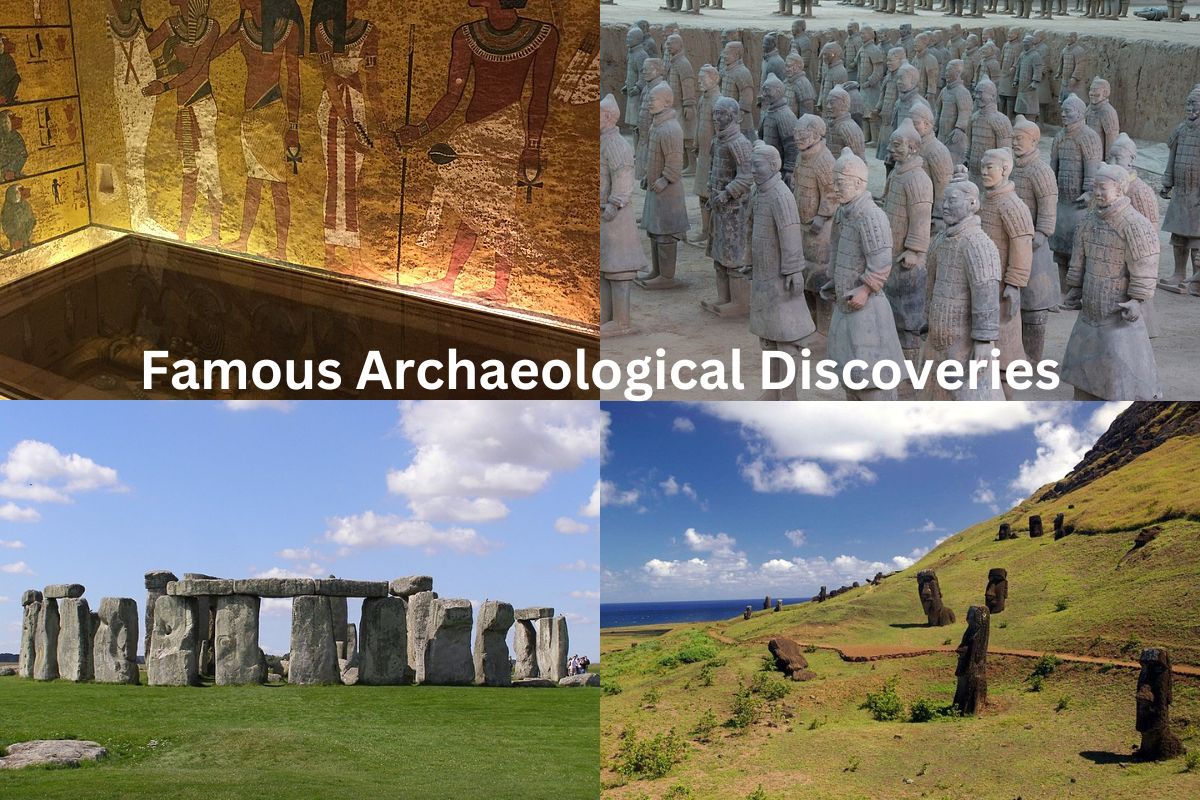Archaeological discoveries have played a vital role in uncovering the mysteries of ancient civilizations, as they have shed light on the manner in which people lived, worked, and communicated with one another many centuries in the past.
These discoveries have added to our knowledge of human history and assisted us in piecing together the events that took place in the past.
Some of the most famous archaeological discoveries include:
- The Tomb of Tutankhamun
- Pompeii Stonehenge
- Machu Picchu
- The Terracotta Army
- The Dead Sea Scrolls
These discoveries have piqued the interest of people all around the world and continue to be something that historians, archaeologists, and the general public find to be fascinating.
Famous Archaeological Discoveries
1. Tutankhamun’s Tomb, Egypt
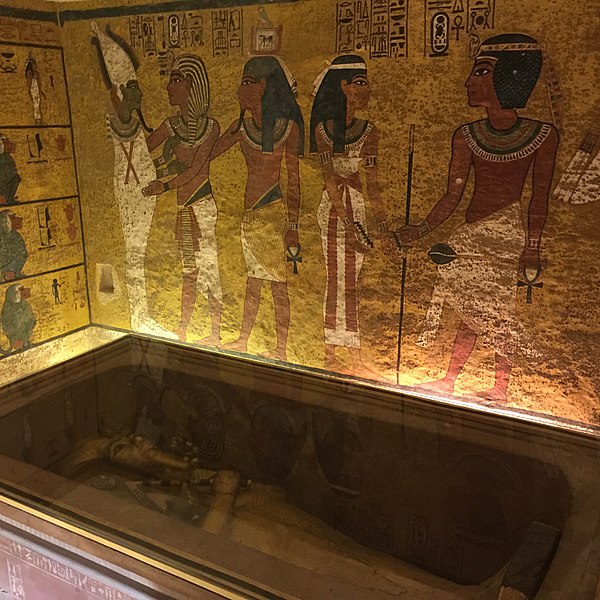
The discovery of Tutankhamun’s tomb in the Valley of the Kings, Egypt, by British archaeologist Howard Carter in 1922 is one of the most renowned archaeological discoveries in history.
The tomb, which had been undisturbed for almost 3,000 years, contained a tremendous treasure trove of items, including King Tutankhamun’s famed gold mask.
Tutankhamun was a minor 18th dynasty Egyptian pharaoh who assumed the throne at a young age and died suddenly.
His tomb was initially ignored by prior archaeologists because to its small size and unassuming appearance; but, Carter’s perseverance and meticulous excavation eventually unearthed the extraordinary treasures housed within.
The objects discovered in Tutankhamun’s tomb revealed a wealth of knowledge about ancient Egyptian religion, art, and craftsmanship. The tomb contains furniture, weaponry, jewelry, and other personal belongings in addition to the mummy of the pharaoh.
Currently, many of Tutankhamun’s tomb’s valuables are on exhibit at the Egyptian Museum in Cairo, while the tomb itself has been conserved as an archaeological site and tourist attraction.
Since over a century ago, the discovery of Tutankhamun’s tomb has captivated the imaginations of people throughout the world as one of the most momentous occurrences in the history of Egyptology.
2. Rosetta Stone, Egypt
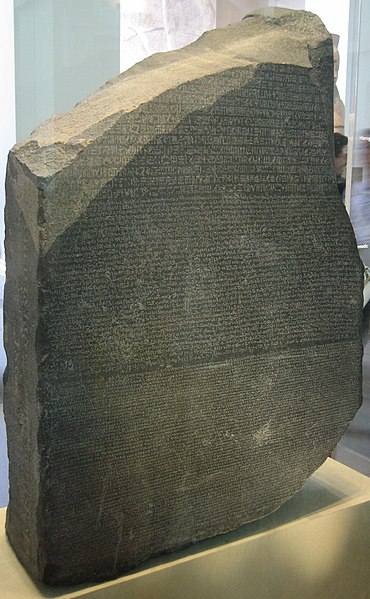
The Rosetta Stone is a famous ancient relic that was found by a French army officer in Egypt in 1799. The stone, a slab of black basalt etched with a 196 B.C. decree from Memphis, features the same text in three different scripts: hieroglyphics, demotic (a simpler version of hieroglyphics used in everyday life), and Greek.
At the time of the stone’s discovery, the capacity to interpret hieroglyphics had been lost for generations, and scholars were baffled by the language. To read the hieroglyphic and demotic writings, however, the inclusion of the Greek script on the stone served as a significant key.
It enabled historians to decipher previously unreadable hieroglyphic manuscripts and to get a deeper grasp of ancient Egyptian culture and history.
The Rosetta Stone is regarded as one of the most significant archaeological discoveries in history, and its discovery transformed Egyptology. The stone is currently housed in the British Museum in London, where it continues to be one of the most popular exhibitions.
Over the ages, the stone has inspired innumerable researchers and linguists as a symbol of the significance of language and translation.
3. Pompeii, Italy

Pompeii was an ancient Roman city near modern-day Naples, Italy, that was destroyed and buried by Mount Vesuvius’ eruption in 79 A.D. Until its rediscovery in the 18th century, the city was buried and mostly forgotten, giving a surprisingly well-preserved glimpse of Roman Empire daily life.
The city’s ruins offer a unique look into the life of an old Roman metropolis, with intact theater, markets, and temples, among other buildings, streets, and public areas. Pompeii is also renowned for its numerous pieces of ancient Roman art, including mosaics and paintings.
Also Read: Facts About Pompeii
The discovery of Pompeii has revealed a plethora of information about ancient Rome, from its architecture and engineering to its inhabitants’ daily lives. The preservation of the city has provided historians and archaeologists with insights into ancient Roman life that would have been lost to history otherwise.
Today, Pompeii is a popular tourist destination, and the site has undergone considerable excavation and restoration. It is also a UNESCO World Heritage Site, and its discovery remains one of the most important archaeological discoveries ever.
4. Stonehenge, England

Stonehenge is a prehistoric monument in Wiltshire, England, comprised of a ring of up to 25-ton standing stones set in a round formation. It is thought that the structure served as an astronomical observatory as well as a location for religious and cultural rituals. Its construction began approximately 3000 B.C.
Stonehenge’s purpose is unknown, however it is widely assumed that it was used for astronomical observations and to mark the changing of the seasons. The construction of the monument was a remarkable feat of engineering, as the massive stones had to be transported from Wales, over 200 miles away.
Stonehenge has had a substantial impact on our understanding of prehistoric Britain and its people’s social and cultural practices. Stonehenge is currently one of the most popular tourist destinations in England, attracting millions of visitors annually.
The monument is also a UNESCO World Heritage Site, and it continues to awe and fascinate people throughout the world.
5. Machu Picchu, Peru

The ancient Incan citadel of Machu Picchu is located in the Andes Mountains of Peru. Built in the 15th century, the site was abandoned and mostly forgotten until its rediscovery in 1911 by the American archaeologist Hiram Bingham.
The site is famous for its engineering and design, especially its intricate terraces, irrigation systems, and stone structures. It is thought that the site was a royal estate or religious center, and it is recognized for its breathtaking location, high in the highlands and surrounded by towering peaks.
The discovery of Machu Picchu has had a profound effect on our knowledge of the Incan culture and its achievements. The site has become one of South America’s most popular tourist destinations, attracting millions of people annually.
In addition to being a UNESCO World Heritage Site, Machu Picchu continues to awe and fascinate tourists around the world.
6. Troy, Turkey

Troy is a historic city located near the Dardanelles in modern-day Turkey. The Trojan War, a fabled struggle between the Greeks and Trojans that was documented in Homer’s epic poem The Iliad, took place in this city.
German archaeologist Heinrich Schliemann rediscovered the ruins of Troy in the late 19th century, believing he had discovered the legendary city of Troy. Since then, the site has been intensively investigated, yielding invaluable insights into the ancient Greek and Trojan cultures and societies.
Troy was inhabited from the Bronze Age through the Byzantine era, and its remains offer evidence of the various cultures and civilizations that inhabited the region throughout the ages.
The discovery of Troy has supplied significant information about the ancient world and helped to shed light on one of the most renowned narratives in Western literature.
Currently, the ruins of Troy are a popular tourist destination and a UNESCO World Heritage Site. The discovery of Troy remains one of the most remarkable archaeological discoveries of all time, and it continues to fascinate people throughout the globe.
7. Dead Sea Scrolls, Israel
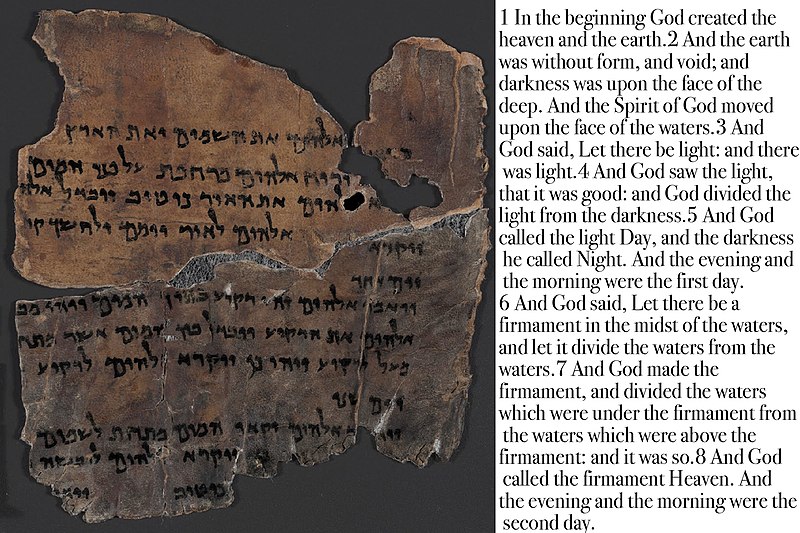
The Dead Sea Scrolls are a collection of ancient Jewish literature discovered in the region of the Dead Sea in what is now Israel during the 1940s and 1950s.
The scrolls, which are written in Hebrew, Aramaic, and Greek, date to the Second Temple period (approximately 530 BCE to 70 CE) and comprise religious texts, hymns, commentaries, and legal records, among others.
The discovery of the Dead Sea Scrolls has had a tremendous impact on our knowledge of Judaism, Christianity, and Middle Eastern history. The texts illuminate the beliefs, practices, and values of the ancient Jewish community and provide fresh insights into the evolution of Jewish thought and religion.
The Dead Sea Scrolls are preserved at the Israel Museum in Jerusalem, where they continue to be researched and analyzed by scholars and researchers from all over the globe.
The scrolls have become a symbol of the significance of preserving and protecting historical texts and ancient artifacts, and their discovery remains a magnificent demonstration of the ability of archaeology to reveal the secrets of the past.
8. Easter Island, Chile

Easter Island, also known as Rapa Nui, is a remote South Pacific island located off the coast of Chile. The mystery statues, known as moai, were carved by the Rapa Nui people between the 13th and 16th centuries and have made the island famous.
Some of the moai weigh up to 75 tons and are renowned for their intricate carvings and distinctive characteristics, such as elongated ears and noses. It is believed that the moai played a significant role in the religious and cultural traditions of the Rapa Nui people, but their purpose remains a mystery.
The discovery of Easter Island has had a profound effect on our knowledge of ancient Polynesian civilization and the human capacity to adapt to remote and isolated places.
The unique cultural heritage of the island has also made it a popular tourist destination, and the moai continue to inspire awe and fascination in people around the world.
Today, Easter Island is a UNESCO World Heritage Site, and the moai continue to represent the inventiveness and creativity of human civilization.
9. The Terracotta Army, China
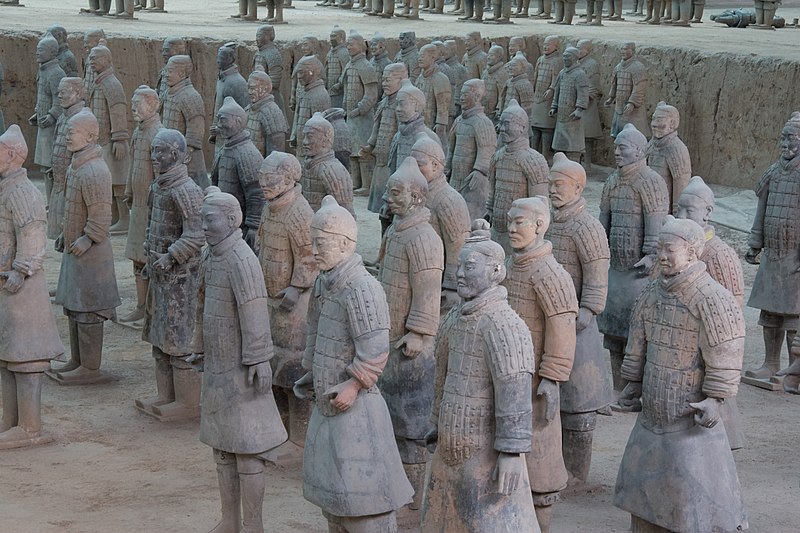
The Terracotta Army is a collection of terracotta figurines depicting the armies of the first Chinese Emperor, Qin Shi Huang. The army was buried with the emperor in his tomb between 210 and 209 BCE, and it was unearthed in 1974 by farmers in Xi’an, China.
The Terracotta Army is regarded as one of the most significant archaeological discoveries of the 20th century, and its sculptures are recognized for their exquisite detail and craftsmanship.
The army consists of thousands of unique figurines, including soldiers, archers, charioteers, and horses, each with distinctive features and facial expressions.
The discovery of the Terracotta Army has illuminated the social and political processes of the Qin dynasty and provided vital insights into the culture and history of ancient China. The sculptures remain one of the most renowned and awe-inspiring specimens of ancient Chinese art and craftsmanship, and the site has become a significant tourist destination.
Now, the Terracotta Army is a UNESCO World Heritage Site, and it continues to awe and fascinate people worldwide.
10. Petra, Jordan

Petra is an ancient city in southern Jordan that is renowned for its exquisite rock-cut architecture and breathtaking desert vistas. From the fourth century B.C. to the second century A.D., the city was the seat of the Nabataean Kingdom, a great commercial empire that dominated the region.
The spectacular architecture of Petra, including the Treasury, the Monastery, and the Boulevard of Facades, is carved into the red sandstone cliffs around the city. The city served as a major nexus for the caravan trade that connected the Mediterranean civilization to the Arabian Peninsula and beyond.
The discovery of Petra has provided invaluable insights into the culture and society of the ancient Near East and put light on the complicated interactions between the region’s diverse civilizations. Currently, Petra is a prominent tourist destination and a UNESCO World Heritage Site.
The city continues to inspire awe and astonishment in people worldwide and is often considered as one of the world’s most stunning archaeological monuments.
11. The Nazca Lines, Peru
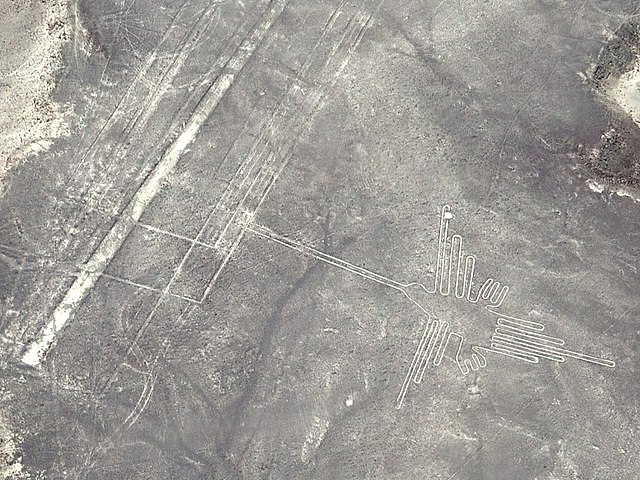
The Nazca Lines are an ancient set of geoglyphs or large-scale patterns in the Nazca Desert in southern Peru. The Nazca civilization constructed the lines between 500 BCE and 500 CE, and they are famed for their exquisite designs and huge magnitude.
More than 800 unique figures, including animals, plants, and geometric patterns, make up the Nazca Lines, which were made by removing the reddish-brown iron oxide-coated pebbles that cover the surface of the Nazca Desert. Large designs that can only be properly appreciated from the air.
It is claimed that the Nazca Lines were developed for religious or astrological purposes, or as a huge irrigation system. The lines are regarded as one of the most spectacular instances of pre-Columbian art in the Americas, and their discovery has shed light on the Nazca people’s culture and beliefs.
Now, the Nazca Lines are a UNESCO World Heritage Site, and they continue to awe and fascinate people all over the world. The lines are also a big tourist attraction, and visitors may view them from the air by flying above the Nazca Desert.
12. The Valley of the Kings, Egypt
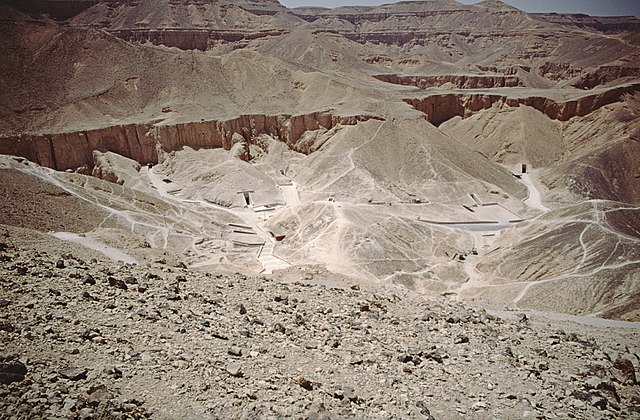
The Valley of the Kings is an Egyptian cemetery located on the west bank of the Nile near Luxor. During the New Kingdom (16th to 11th century BCE), it was the burial site for pharaohs and their consorts, and it contains some of the most spectacular and well-preserved tombs of ancient Egypt.
The valley contains over sixty tombs, including those of notable pharaohs like Tutankhamun and Ramesses II. The tombs are renowned for their magnificent décor and paintings, which portray afterlife events and the pharaoh’s voyage to the underworld.
The discovery of the Valley of the Kings has had a profound effect on our knowledge of ancient Egyptian religion, culture, and society. The tombs and their decorations have yielded new knowledge about the lives and reigns of some of Egypt’s most renowned pharaohs.
Today, the Valley of the Kings is a popular tourist destination, and the tombs remain a stunning witness to the ancient Egyptian civilization’s power and wealth. The valley is a UNESCO World Heritage Site, and it continues to inspire amazement and wonder in people worldwide.
13. The Minoan Palace of Knossos, Greece
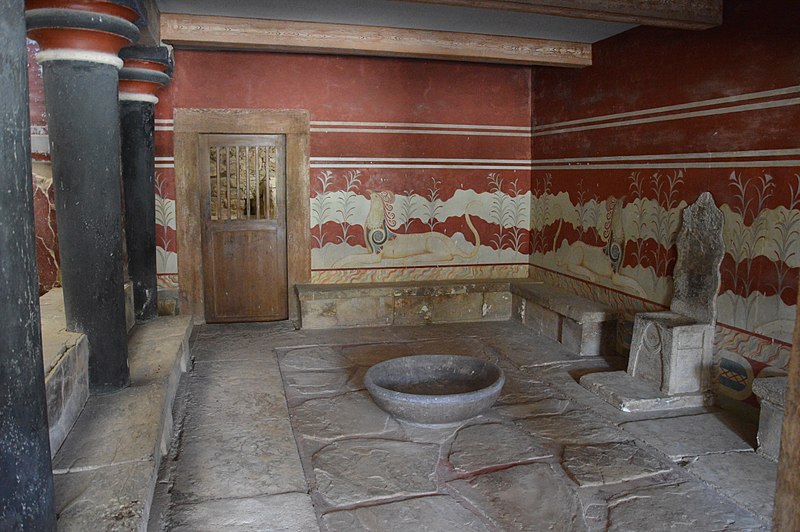
The Minoan Palace of Knossos is a collection of ancient palaces located on the Greek island of Crete. The palace was constructed by the Minoan civilization, which flourished on Crete during the Bronze Age (3000-1200 BCE), and is said to have been one of the largest and most significant palaces in the Minoan world.
The palace complex at Knossos is renowned for its impressive architecture and art, including its distinctive frescoes depicting everyday life, religious rituals, and mythological creatures.
The palace is particularly renowned for its intricate design, with several courtyards, staircases, and hallways that are believed to have fulfilled residential, administrative, and religious functions.
The discovery of the Minoan Palace of Knossos has shed light on the culture and society of the ancient Minoans and the role of Crete in the emergence of Western civilization.
The palace complex is currently a major tourist attraction and a UNESCO World Heritage Site. It is widely recognized as one of the most significant archaeological sites in Greece, and continues to astound and fascinate people from all over the world.
14. The Viking Ship Burials, Norway
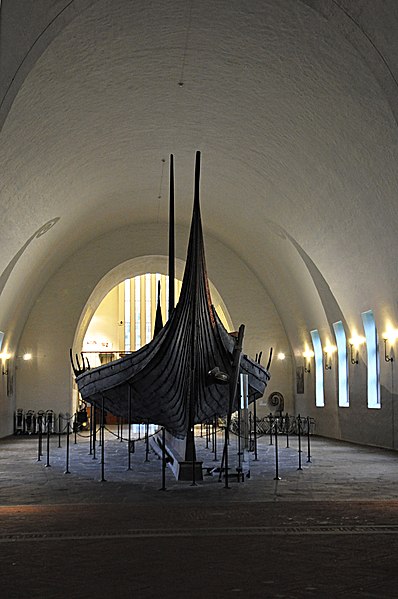
The Viking Ship Burials are a series of archaeological discoveries in Norway consisting of tombs in which Viking chiefs and nobles were buried in their ships, together with their valuables and, in some cases, servants.
The Oseberg Ship Burial, discovered in 1904 on the Oseberg farm near Tnsberg, is the most renowned Viking Ship Burial. The 9th-century ship Oseberg contained the skeletal remains of two women as well as numerous valuable artifacts, including textiles, weapons, and animal bones.
The Gokstad ship, the Tune ship, and the Borre mound cemetery are further significant Viking Ship Burials.
The discovery of the Viking Ship Burials has had a profound effect on our understanding of Viking culture and civilization, and has provided invaluable insights into the Vikings’ religious beliefs, social hierarchy, and technological advances.
The ships are among the most magnificent and well-preserved specimens of Viking art and technology, and are regarded as outstanding feats of engineering and craftsmanship.
Nowadays, the Viking Ship Burials are recognized as significant cultural heritage sites in Norway, and they continue to awe and fascinate tourists all over the world. The ships and their contents are displayed in museums around Norway, where they are researched by researchers and admired by visitors.
15. Staffordshire Hoard
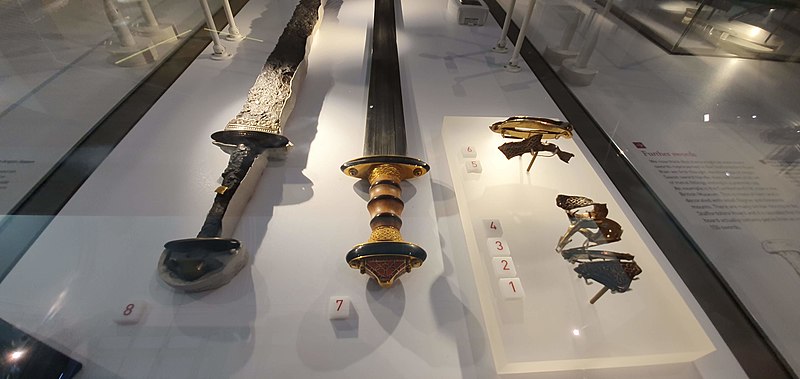
The Staffordshire Hoard is a collection of over 3,500 pieces of Anglo-Saxon gold and silver metalwork, discovered by a metal detectorist in Staffordshire, England in 2009.
The hoard is believed to date back to the 7th or 8th century, and is considered one of the most significant finds of Anglo-Saxon material culture ever discovered.
The items in the hoard include intricately decorated sword hilts, helmet fragments, and other items of weaponry, as well as religious artifacts such as crosses and decorative pieces that were likely used to adorn book covers or ecclesiastical vestments.
The quality of the craftsmanship and the sheer amount of precious metals used in the hoard suggest that the items were owned by wealthy members of the Anglo-Saxon elite.
The discovery of the Staffordshire Hoard has provided a wealth of new information about Anglo-Saxon England, shedding light on the culture and society of this period. It is currently on display at the Birmingham Museum and Art Gallery, and has become a major tourist attraction.
